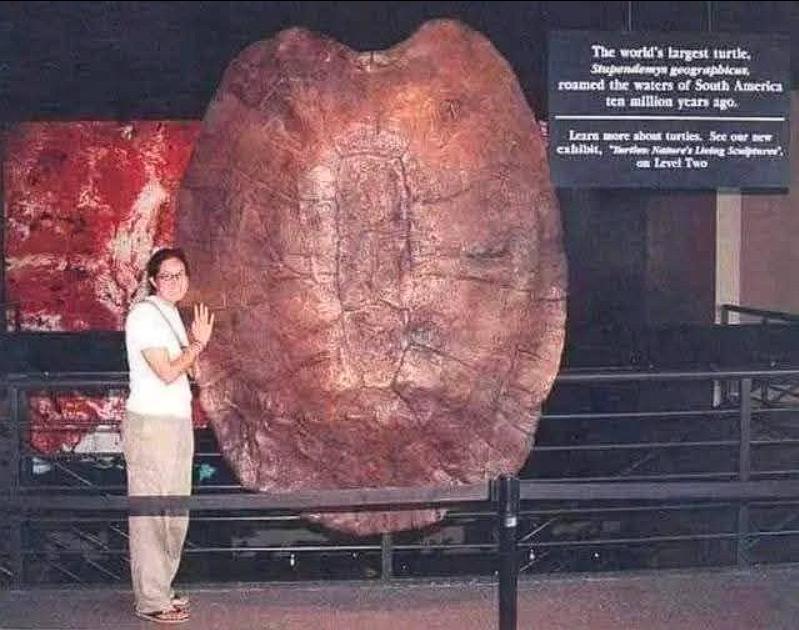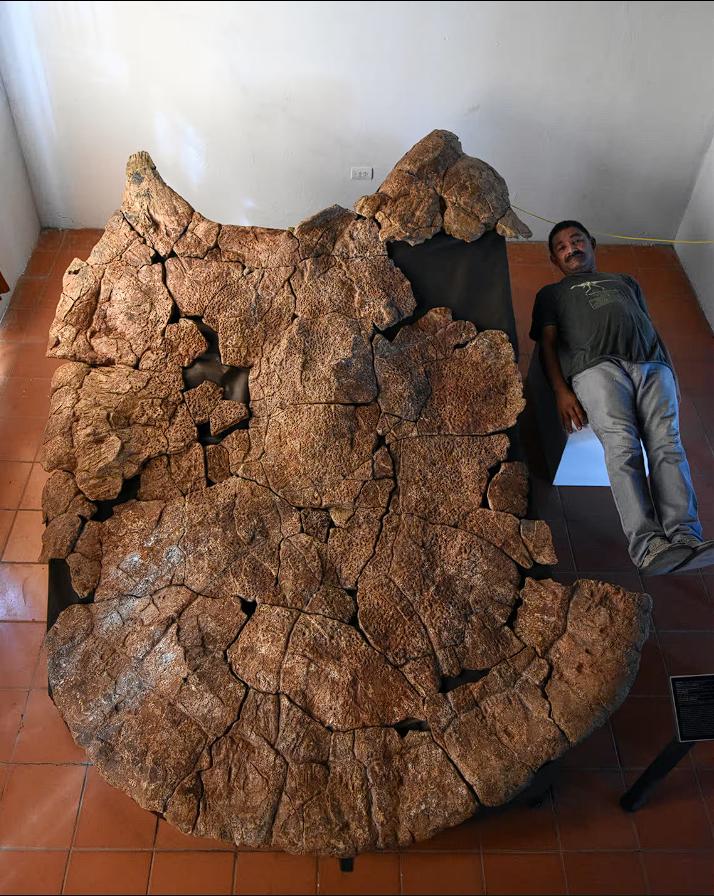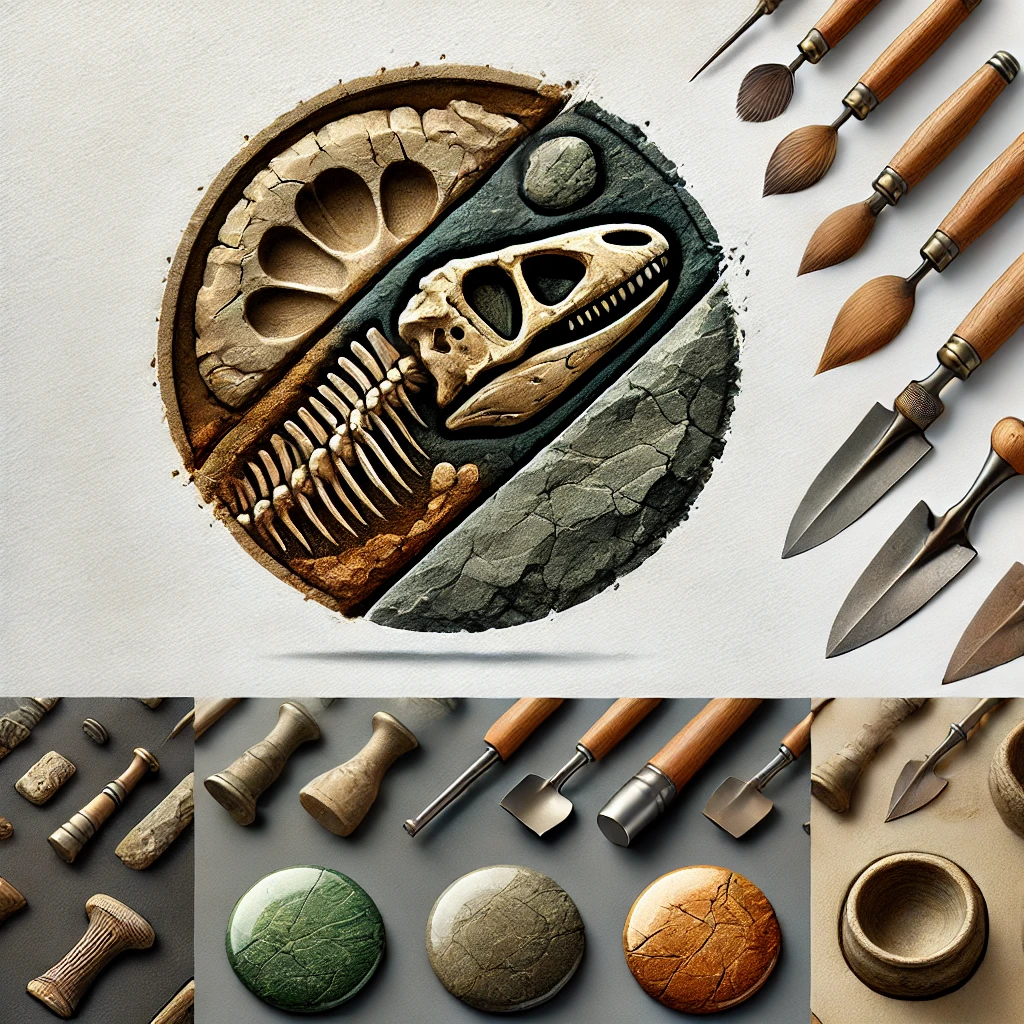“Ten million years ago, the verdant rivers of South America harbored a creature of truly gargantuan proportions—the Stupendemys geographicus, a freshwater turtle that dwarfed all others, a veritable titan of its time.”

A Colossal Presence: The Reign of the Giant Turtle
- A Carapace of Immensity: A Prehistoric Leviathan:
- With a carapace extending over two meters in length—a span exceeding that of a king-size bed—this prehistoric colossus reigned as the largest freshwater turtle ever to grace the earth.
- Belonging to the Podocnemididae family of side-necked turtles, its fossilized remains, unearthed across the northern reaches of South America, provide a tangible link to a world between the Middle Miocene and the early Pliocene, spanning roughly 13 to 5 million years ago.
- Distinctive Features: The Horned Titans of Antiquity:
- Male specimens of this extraordinary species exhibited unique horn-like structures at the anterior edge of their shells, features that scientists speculate were employed in combat or elaborate displays.
- The discovery of a juvenile specimen further revealed that the shells of these creatures underwent a flattening process as they matured, a detail that illuminated the life cycle of these ancient giants.

A Predator of the Wetlands: A Generalist Feeder in a Dramatic Ecosystem
- A Mighty Predator: The Crunch of Ancient Jaws:
- A skull discovered in 2021 has led scientists to conclude that Stupendemys was a generalist feeder, possessing the capacity to crush and consume a diverse range of prey.
- This revelation paints a picture of a formidable predator, capable of tackling substantial prey, a creature that could have posed a threat to any unfortunate enough to cross its path in the ancient wetlands.
- A Titan Among Titans: The Miocene Megafauna:
- This ancient turtle was more than just a creature of immense size; it was a slow-moving titan, a denizen of the Miocene wetlands, coexisting with giant crocodilians and other megafauna.
- It occupied a pivotal role in one of the most dramatic chapters of prehistoric life, a time when the earth was home to creatures of extraordinary scale and power.

A Legacy in Fossils: Echoes of a Lost World
- The Stupendemys geographicus, therefore, stands as a testament to the extraordinary biodiversity of the ancient world, a reminder of the colossal creatures that once roamed the earth.
- Its fossilized remains offer a glimpse into a lost ecosystem, a time when titans walked among us, and the rivers of South America teemed with life on a scale that defies modern imagination.
Conclusion
“Stupendemys geographicus, a colossal freshwater turtle of the Miocene epoch, stands as a testament to the grandeur of prehistoric life. Its immense size, unique features, and predatory capabilities paint a vivid picture of a world inhabited by giants, a time when the wetlands of South America echoed with the slow, deliberate movements of a true titan.”

CÁC TIN KHÁC
Mary Walton: The Forgotten Inventor Who Helped Clean Up America’s Cities
Tomb of Queen Nefertari in the Valley of the Queens, Egypt
Discover the Hypostyle Hall of the Temple of Hathor at Dendera
Venus de Losange: Unveiling the Mystery of a 20,000-Year-Old Paleolithic Icon